Building a PC in 2022
I built the first PC I ever used from some spare parts my dad had laying around. That was in 1989, I was 9 years old and instantly became a PC enthusiast. I had just built a system with a 286 CPU in an AT form factor tower case with a 20 Megabyte (not a typo) HDD and was already looking forward to upgrading to a 386. I built every PC I owned from then on, using the old parts to make a PC for a friend or family member. Then in 2011 I bought a laptop and gave away my last desktop build. There simply weren't any options for building a desktop class machine in a laptop form factor. Until now.
Consumer Electronics is broken
Framework makes a DIY Laptop kit with modern power and capabilities in an incredible 13 inch thin and light form factor.
According to Framework, the consumer electronics industry is broken. The typical business model in the space promotes cranking out new devices every year that can be disposed of when the next model comes out. There's certainly a glut of "disposable" hardware out there, and that's the problem that Framework is trying to address by sustainably producing laptops that can easily be repaired and upgraded by the end user. It's an ambitious goal, and as a natural skeptic myself I doubted they would get anywhere.
However they have recently released the first upgrade, a user replaceable mainboard that fits in the same chassis which makes it possible to reuse most of the existing hardware while upgrading the core components like the CPU. After the upgrade, you don't just have to throw away the old board you can 3D print your own case and make a mini PC out of it. This is so similar to the experience I've had upgrading desktop machines over the years that I just had to try it out.
It takes a community
Framework the company is still young, and while they do fairly well at planning orders they certainly aren't sitting on piles of inventory ready to ship. This means you could be waiting awhile. I received mine in just over a month, although others have been waiting 100+ days, YMMV.
Thankfully, there's a great community of Framework customers who are active on the official forums, Reddit, Discord, and even IRC. This is a great resource for everything from "waiting therapy" to technical support.
Even little things, like the fact that the first boot after installing new memory can take awhile are sometimes more easily found in the community than in the official docs. You can RTFM for stuff like that but you can also RYAF (Remind Your Anxious Friends) with a helpful post.
Participating in the forums gave me an experience much like what I had going to brick an mortar computer stores long ago and talking with the employees about various upgrades. We were even able to collaborate on a public spreadsheet to track our collective order progress without anyone messing it up. Turns out the Internet can still be a nice place to hang out.
Assembly
It's been years since I built a PC for myself, so thankfully I had an 8 year old around to help me. This was a fun project to share with my daughter, and a chance to teach her something about what's inside these things we play Minecraft on.
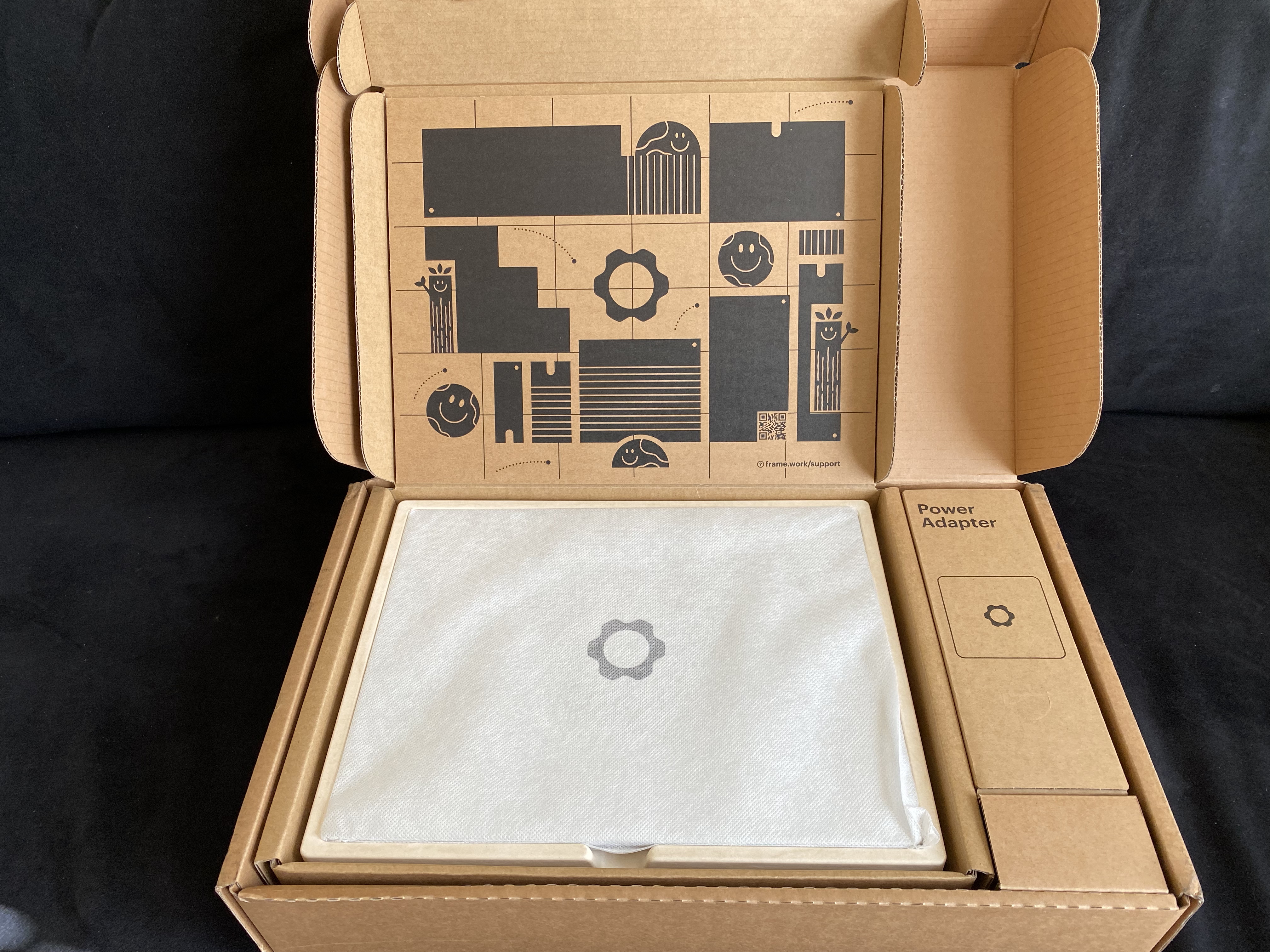
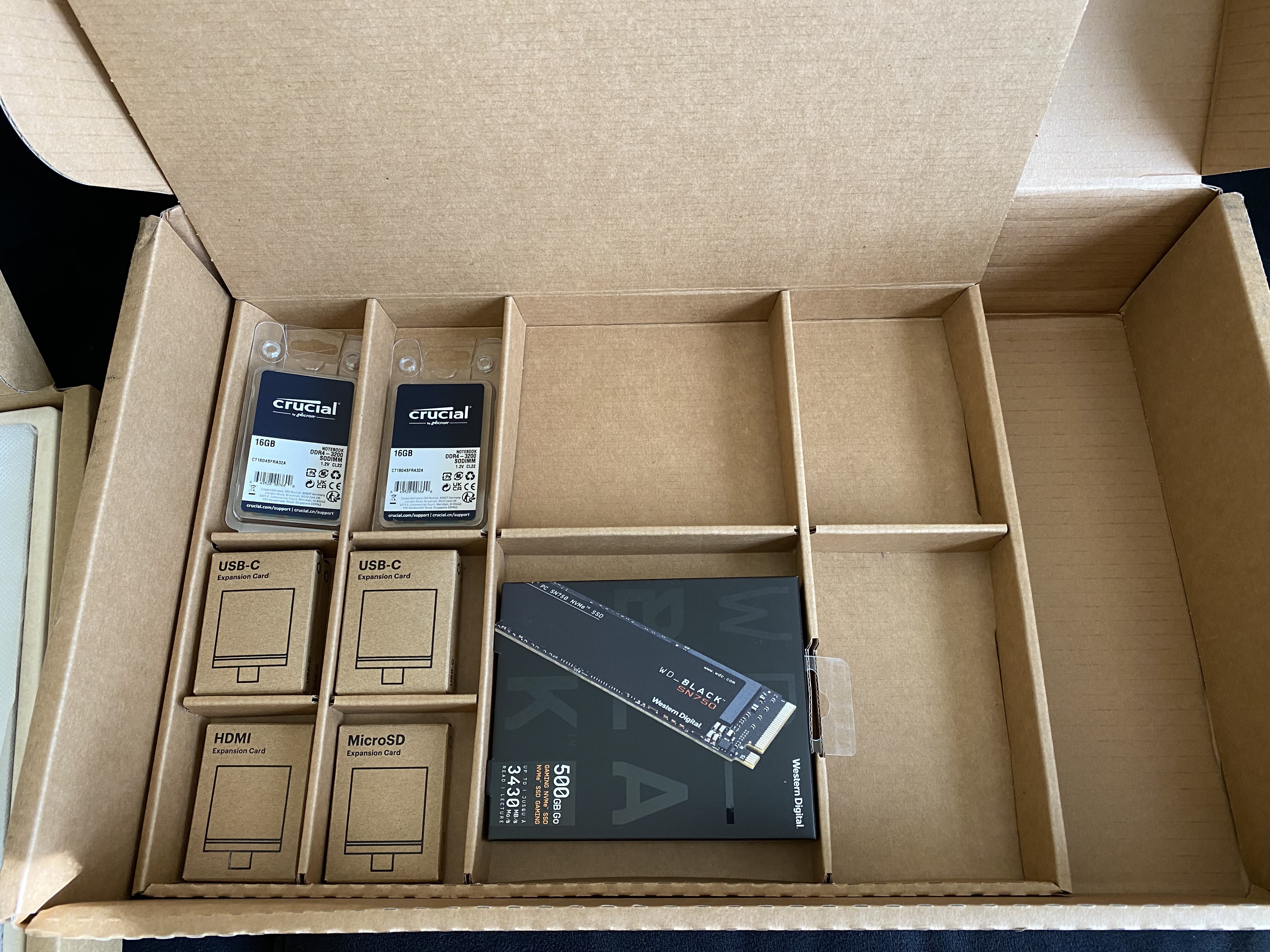
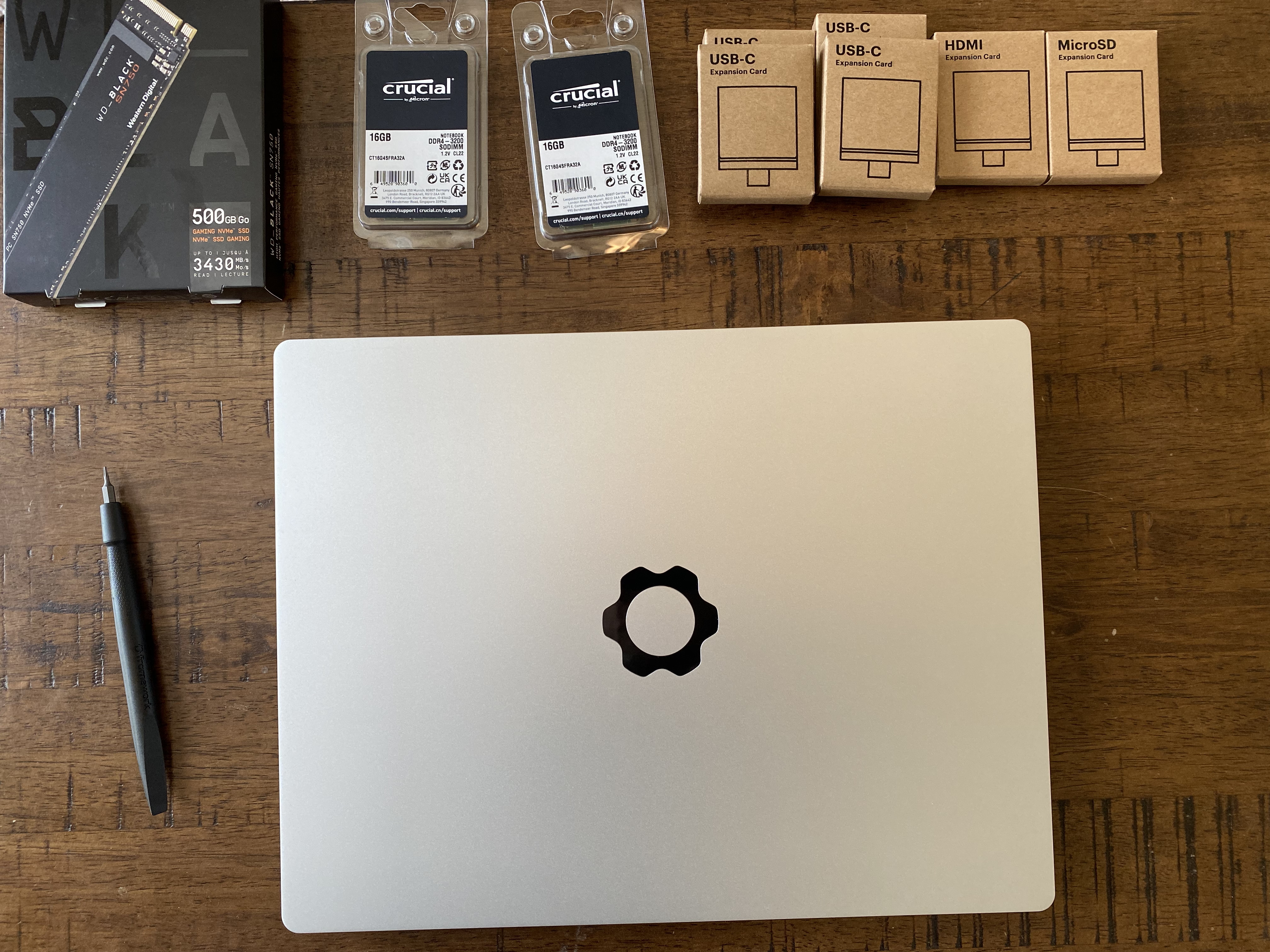
This is also a great opportunity to reuse hardware you might have laying around as NVMe drives are becoming more common in desktops and the laptop can be charged with almost any USB-C charger.
I layed out all of the components next to the laptop, along with the included screwdriver before getting started.
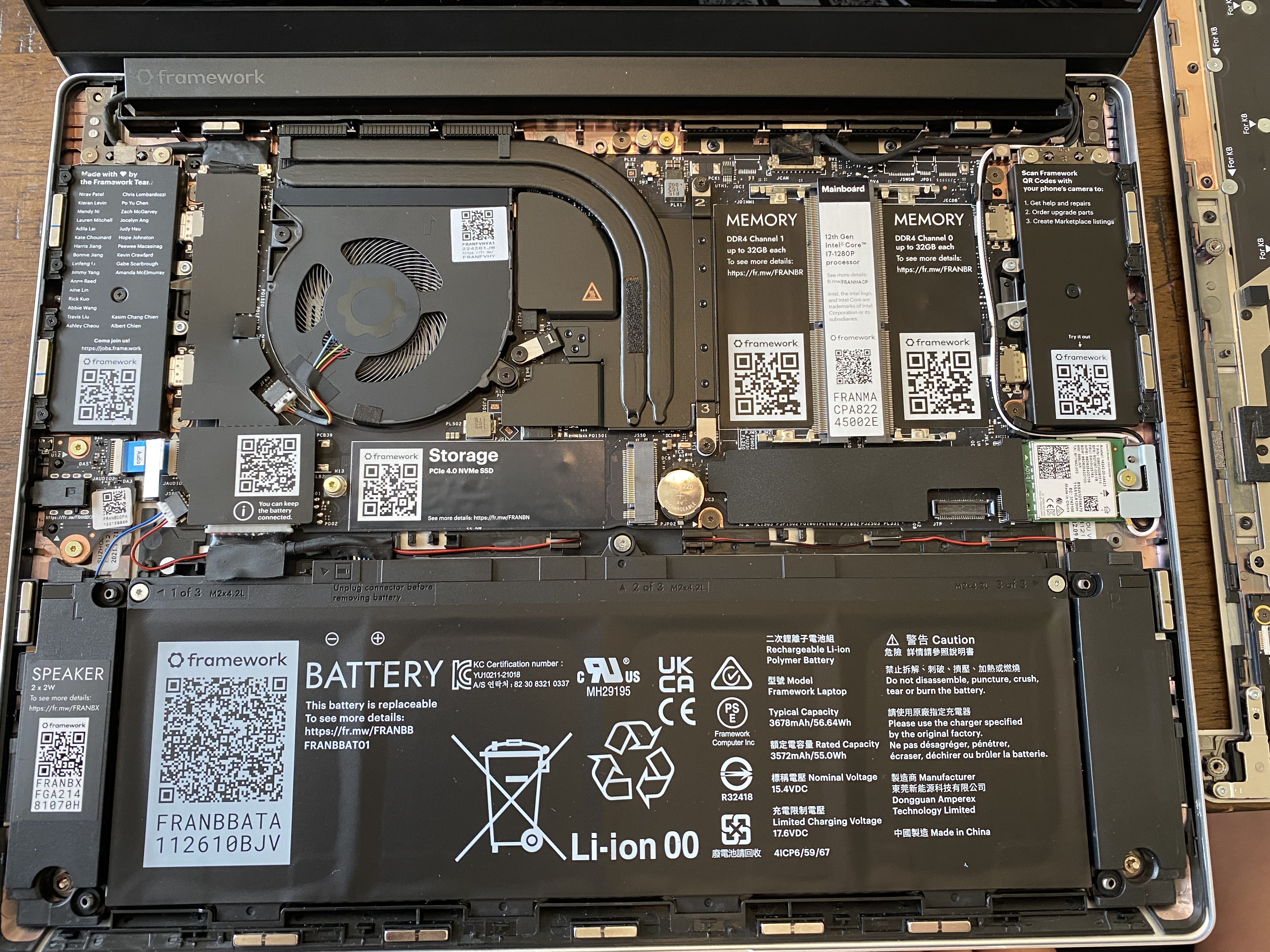
Assembly was simple. The laptop has 5 captive screws on the bottom which can be loosened with the included screwdriver. With that done, all we had to do was flip it over and lift the keyboard off to expose the internals.
The keyboard is attached with a cable that pulls up easily to disconnect. All components are clearly labeled and the QR codes helpfully open a browser to the instructions if needed.
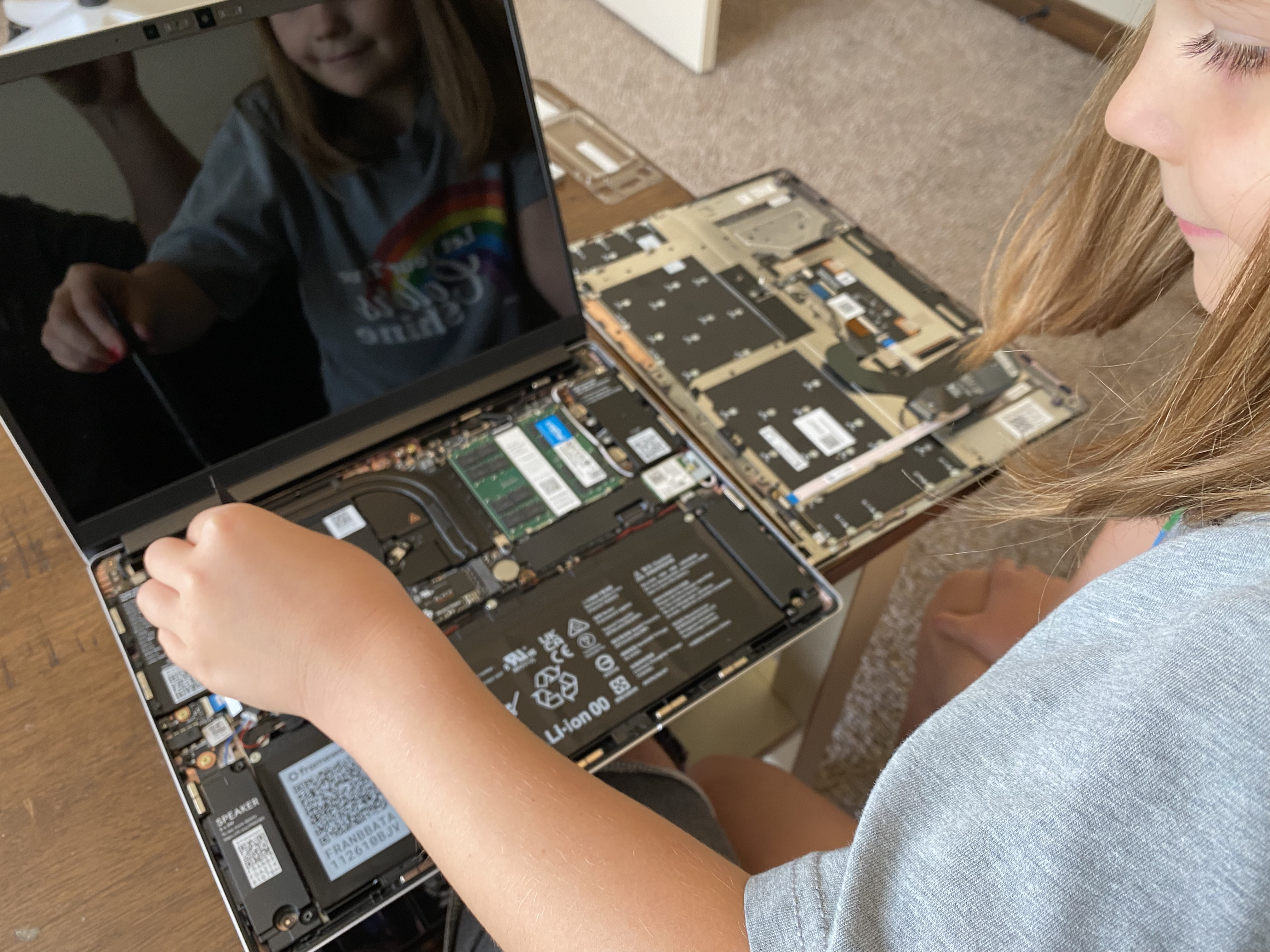
We took a brief instructional tour of all the components and then set to work adding the memory and NVMe drive. The included screwdriver is also used to secure the drive, making this a very simple single tool process. With all the internal components installed we reattached the keyboard cable and set the keyboard back in place. It snaps into place magnetically which is a nice touch.
There's also something different about the way the wrist rest area feels on this compared to other laptops. I prefer the feel of the Framework to my work PC (a Surface Book) for sure.
After all the internals were installed we turned the laptop back over and tightened up the screws. The last step was to install the expansion cards. This is something unique to the Framework: there are four expansion slots, which can each hold a card that provides connectivity such as USB, USB-C, HDMI, MicroSD, Ethernet, or additional storage. I've been slowly moving to USB-C over the past several years and most of my accessories use that connector now, so I ordered 4 USB-C expansion cards which will be installed most of the time. I also picked up HDMI and MicroSD cards to throw in my bag in case I ever do need them.
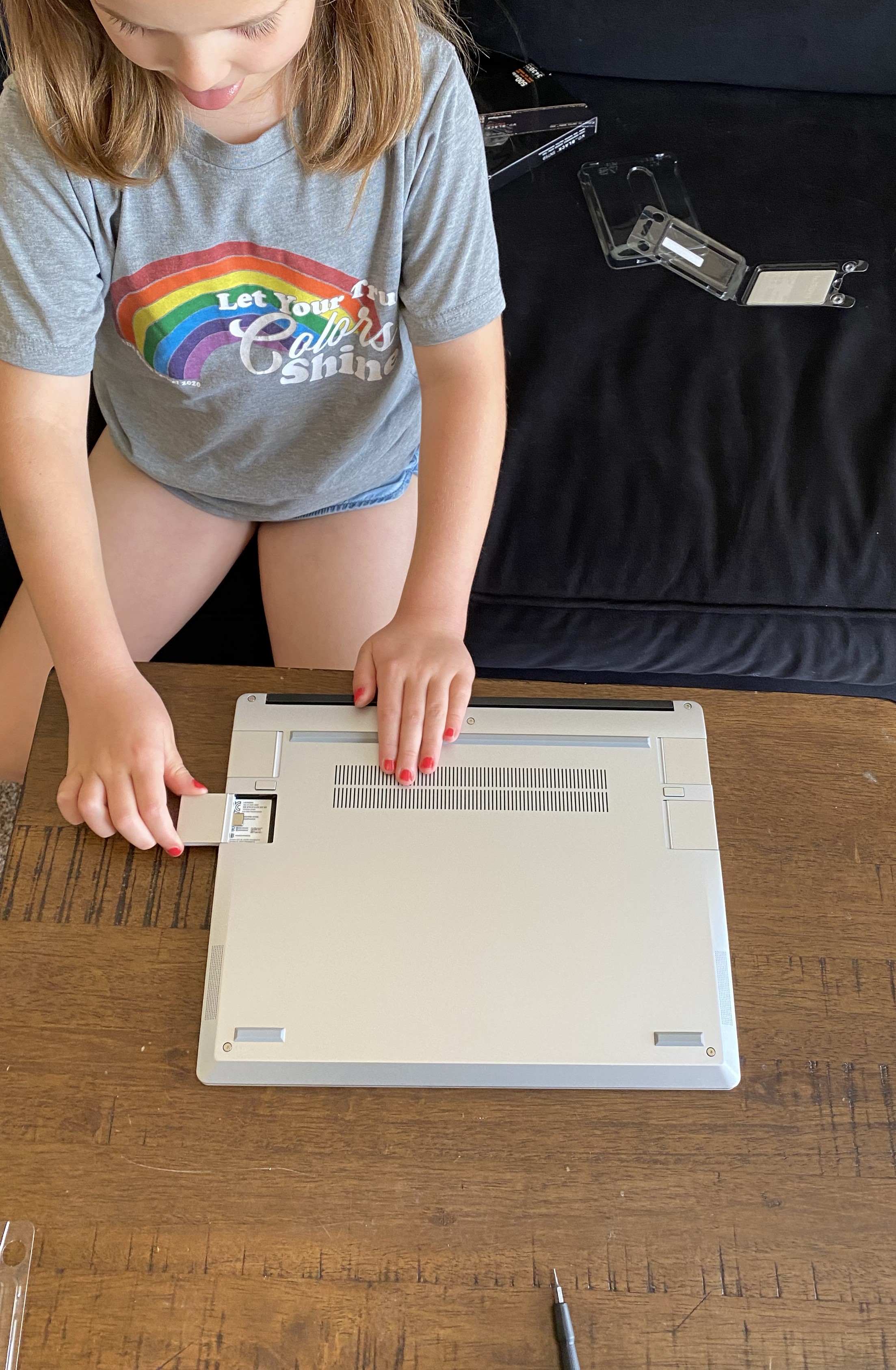
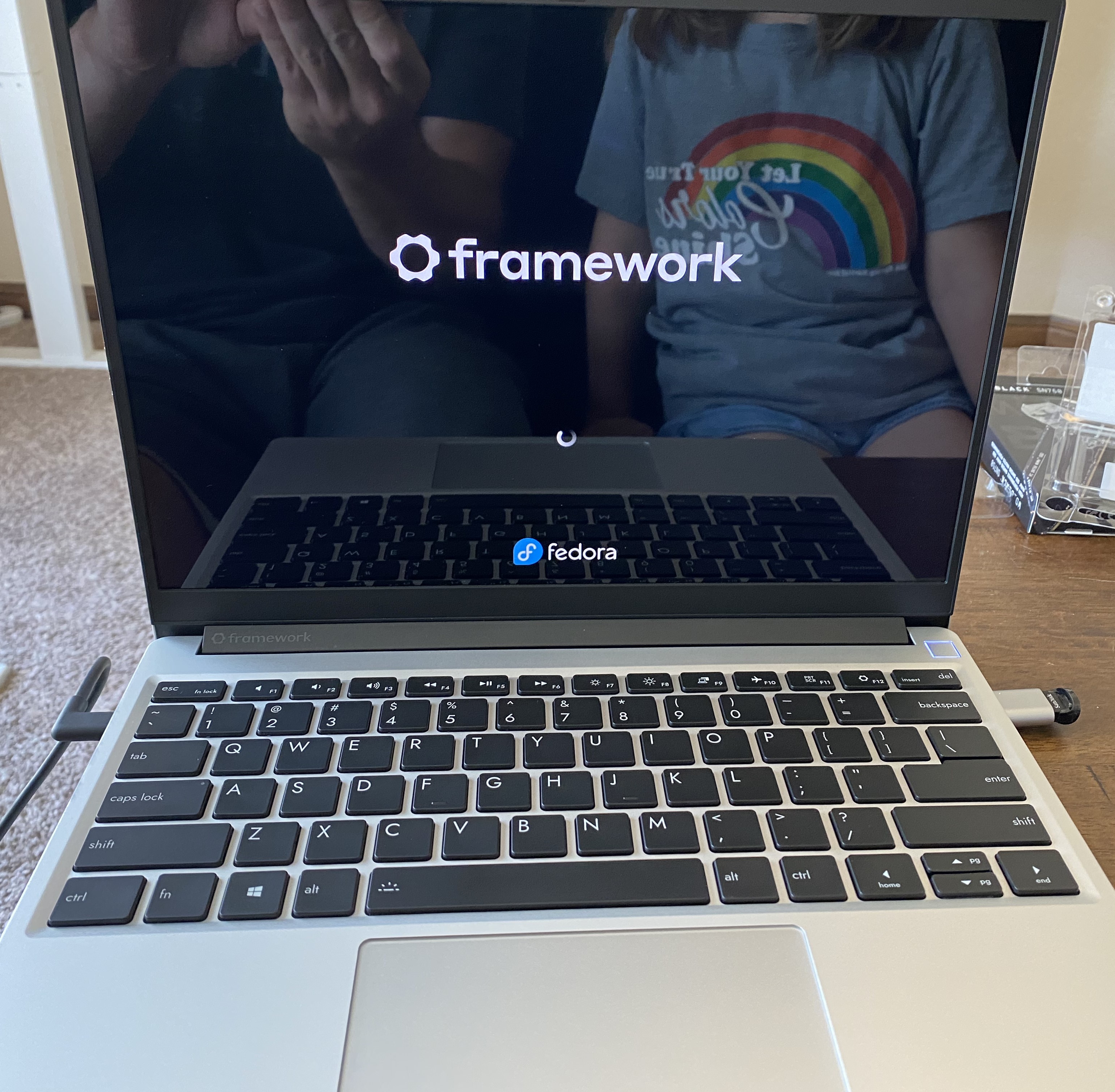
Once all the components were done, it was time to (cross fingers) boot up and install an operating system. I'm a Windows fan, and also an Ubuntu fan but I wanted to try something new this time so I booted to Fedora 36. I was pleasantly surprised at how quickly I was able to get to work. The install was fast, everything worked out of the box and configuration was simple. Overall, this was a great experience.
Framework is really focused on creating repairable, sustainable products. It's all over their website and promotional materials and it's a good goal. They should stay focused on this because I'm sure it's an uphill battle.
Maybe unintentionally, they will succeed in reviving the PC enthusiast market. People like me who enjoy building their own computers can now build some pretty exciting laptops. I would personally like to see an effort to standardize on mainboard form factors, something laptops have never had. There's a great potential here and I'm excited to see how it develops and I hope others will support companies like Framework.
